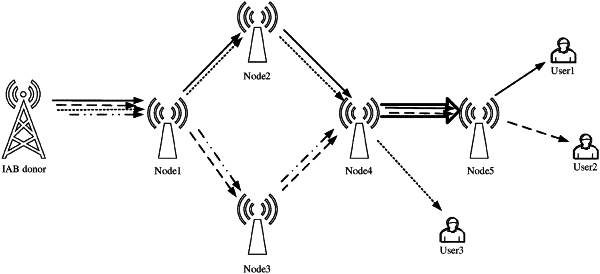| CPC H04W 28/0284 (2013.01) [H04W 28/0273 (2013.01); H04W 28/0862 (2023.05); H04W 88/14 (2013.01)] | 20 Claims |

|
1. A relay node in a Radio Access Network (RAN) comprising:
a radio frequency (RF) interface configured to receive and transmit downlink data for one or more User Equipments (UEs) or UE bearers; and
processing circuitry coupled with the RF interface,
wherein the processing circuitry is configured to:
determine whether a downlink congestion occurs at the relay node; and
generate a downlink congestion indication to identify a UE, a UE bearer, or a backhaul Radio Link Control (RLC) channel affected by the downlink congestion, wherein the downlink congestion indication comprises at least one of UE bearer specific ID, UE specific ID, or Route ID; and
the RF interface is configured to transmit the downlink congestion indication to a donor node in the RAN to alter prioritization of the UE, the UE bearer, or the backhaul RLC channel to reduce a downlink data rate for the UE, the UE bearer, or the backhaul RLC channel based on the downlink congestion indication, wherein the downlink congestion indication is transmitted in accordance with an adaptation layer protocol, wherein the adaptation layer protocol is below an RLC layer.
|